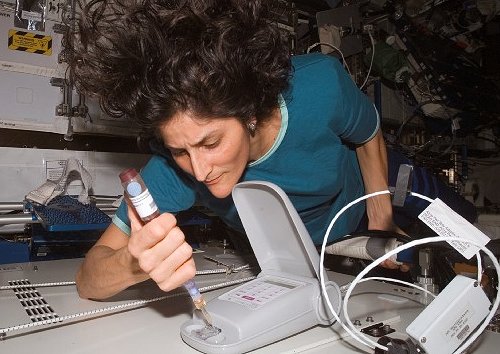Astronauts on board the space station now have their very own tricorder. While this 21st century version isn't as versatile as its 24th century counterpart made famous in the Star Trek television series, it will help keep the ISS crew healthy. The real name of this device is LOCAD-PTS, short for Lab-On-a-Chip Application Development Portable Test System. It's a handheld biological lab specifically designed to detect and identify microbes on space station surfaces.
Wherever there are humans, there are also microbes. Biologists estimate that every human body has at least a trillion hitchhiking microbes, accounting for as much as 2% of a person's total mass. Most live in harmony with native human cells, but others cause illnesses.
LOCAD can currently detect E. coli, salmonella and fungi. Science@ NASA reports that some fungi can actually decompose electronics, and the ISS is full of electronics essential to maintaining the space station.
LOCAD uses specialized cartridges to find different types of microbes. By the end of the year new cartridges will be sent to the station that can detect staphylococcus and streptococcus. Eventually scientists hope to have cartridges to detect all kinds of micro-organisms and chemical compounds, so that the device could be used to diagnose what kind of "bug" an astronaut might have if they become ill.
While the Star Trek tricorder could check vital signs and find alien life, LOCAD can be used on lunar missions, long duration stays on other planets, and also here on Earth to keep track of tiny lifeforms.
LOCAD actually looks more like the tricorder from Star Trek: the Next Generation.
Here's an image of the tricorder from the original Star Trek in the 1960's.
Original News Source:
Science@NASA
 Universe Today
Universe Today
